In their own time, Medieval women were visible, public and involved. Though their defined spheres were often separate from those of men, their roles were nevertheless critical to Medieval society. But in the centuries since, women have slipped below the radar, being written off as secondary to the ‘Great Men of History’. Count the famous women of the Medieval period off on your hand. Joan of Arc, that’s one. Er. Eleanor of Aquitaine? Yes, very good! Christine de Pizan? Bravo, very niche. If you fill up both hands with Medieval women, you’re doing far better than most – women remain criminally unrepresented in popular history.
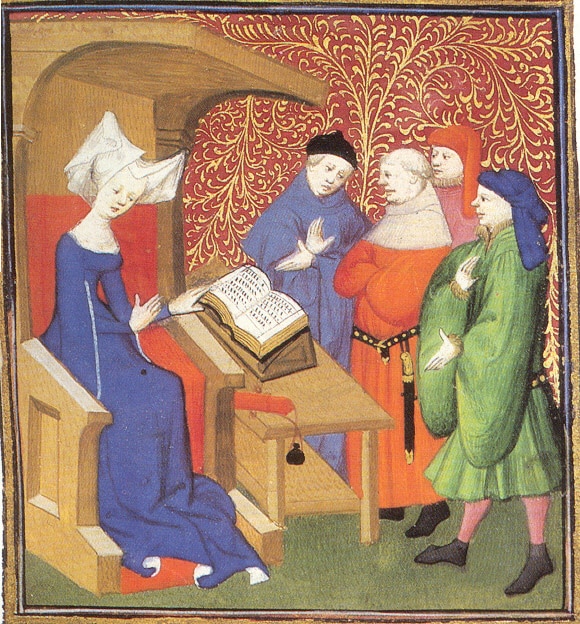
But one of your ten digits will absolutely be Hildegard von Bingen (c. 1098-1179 CE), venerated since the 15th century as Saint Hildegard. A true Medieval polymath, with achievements in mystical theology, music, and cryptography (!), it is her scienitific writings that we shall examine today. When we see Hildegard within the context of her world, divided socially and religiously, her writings on medicine and wellbeing are a shining beacon – lighting the way from ages of ignorance past toward modern science.
Controversy and Civil War
The world that Hildegard von Bingen was born into was one of civil turmoil and religious strife – and its ideological struggles would shape her and her theology. The Holy Roman Empire in the late 11th century was riven by the Investiture Controversy – a series of roiling, interrelated political and religious conflicts which began in 1076 CE, and lasted throughout of Hildegard’s childhood until she was a young adult in 1122 CE. At its root was a power struggle between the Holy Roman Emperor and the Pope over who had the right to invest bishops.
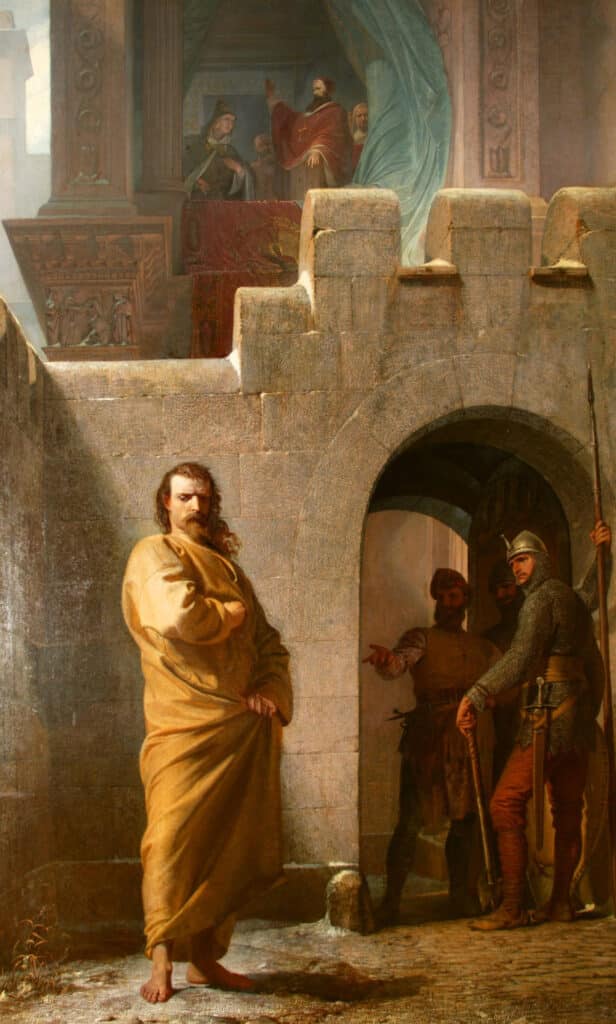
Whereas nowadays, bishops are sedate religious figures with no real temporal power, in the High Medieval era they were critically important political officers: bishoprics were enormously wealthy and powerful entities with their own military forces, and their support (or opposition) to the crown could make or break a King. Kings and Emperors had hitherto invested bishops themselves – choosing second sons from their own or allied families to take the celibate role, ensuring their loyalty. But Pope Gregory VII sought to reclaim the right to appoint bishops for the Papacy: it was a holy office, and thus was answerable only to God (through, of course, the Almighty’s representative in Rome). Holy Roman Emperor Henry IV could not abide this threat to his power, and so launched a series of campaigns against the Pope. In response, Gregory and his successors encouraged rebellion at home by declaring the feudal ties binding Henry’s vassals dissolved. The result was an unsettled world for a girl to grow up in, characterized by constant rebellions and religious uncertainty.
Young Hildegard
Around the year 1098 CE, a pair of parents in the west of the Holy Roman Empire were blessed with a baby girl. They were minor nobles in the service of Count Stephen II of Sponheim, who ruled a small territory in the foothills of the Hunsrück uplands nestled between the Mosel and Rhine rivers, a land of dense forests and dramatic river-valleys – including the small town of Bingen, where they lived. They named this girl Hildegard, and she was certainly not their first child – she had at least seven older brothers and sisters. Whilst we can only guess whether her childhood was happy, it was certainly far more materially privileged and safer than most of Sponheim’s residents – Hildegard would probably have grown up in a large, busy manor, with attendants and good food aplenty.
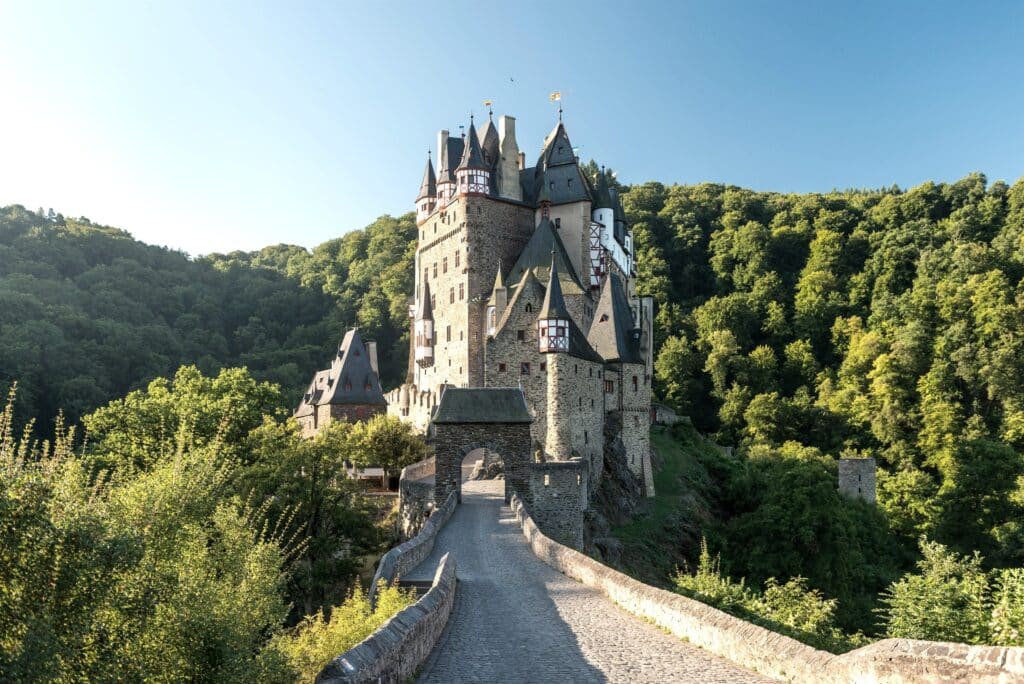
But from a young age, it was clear that Hildegard was a little different. Where her siblings were ordinary wayward children, Hildegard was often quiet, and would often stare into the middle distance – sometimes even reaching out for things that nobody else could see. Young Hildegard was having visions. Even in later years, she struggled to put the numinous quality of these visions into words: she did not experience them ‘by any combination of my five senses, but in my soul alone, while my outward eyes are open’. She described them as an intense, magnificent illumination without shape or volume, brighter even than the Sun itself, which lit up certain things and human actions. She called it ‘the reflection of the living Light’, which she first experienced at the age of three.
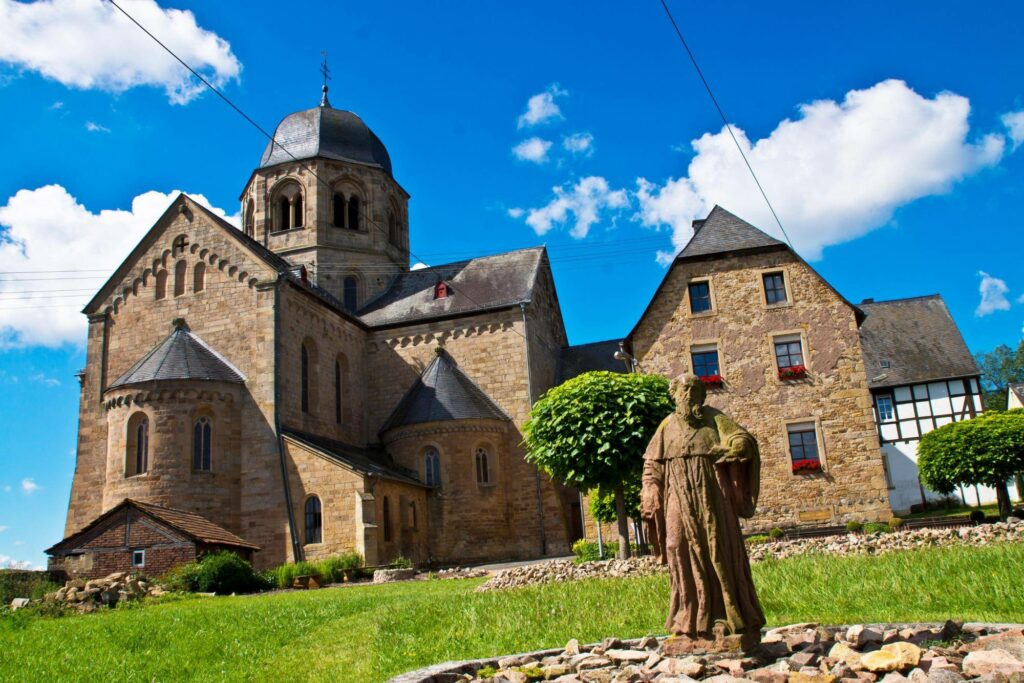
A Girl Who Has Visions
In the Medieval era, people understood differences between people in a very different way than we do today. Without the vast shared knowledge of modern science, the dominant institution offering guidance was the Catholic Church – and so people attempted to find meaning in the forms and experiences of the things around them, viewed through the lens of an Almighty God whose will could be discerned through material phenomena.
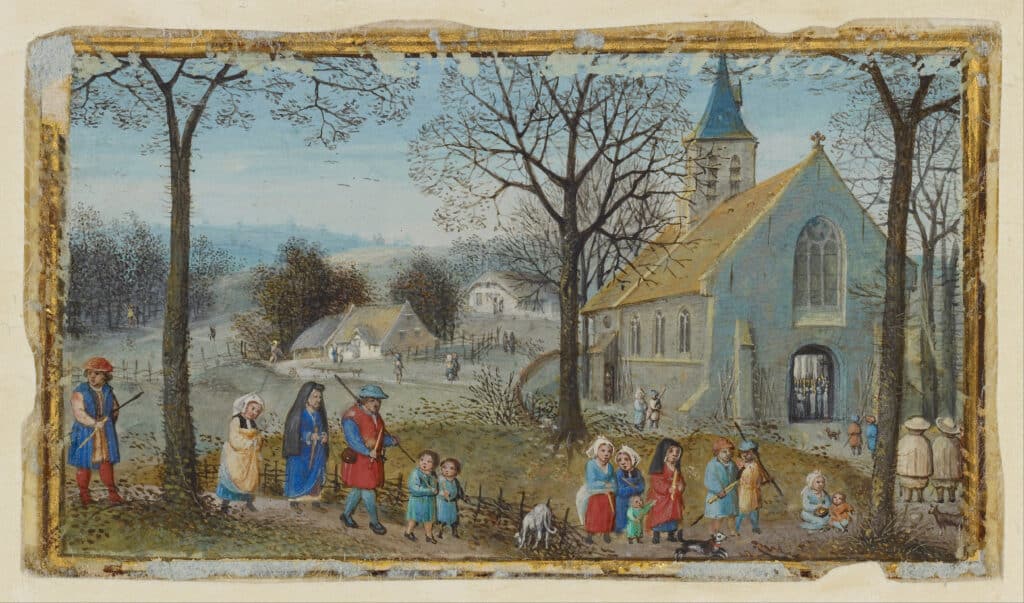
Thus, this was also applied to health and wellbeing: rather than, for example, understanding the birth of a child with a physical disability as an act of genetics or some process of trauma during pregnancy, it was frequently understood as a moral judgment from God, passed down upon the parents. This attitude seems pretty repugnant to us today – but the reverse could also be true: a child who experienced perceived ‘holy’ attributes could be thought of as particularly special. Thus, young Hildegard’s reported experiences were fitted by the adults around her into their worldview: that her ‘reflection of the living Light’ must be a manifestation of the Divine.
Vows Before God
Hildegard von Bingen’s life was set upon her course when she was a young girl. She was offered by her family as an oblate to the monastery at Disibodenberg. This would have meant that she would be bound to serve the monks as a lay member of the monastery, not bound by a life of service like a monk, but observing religious rules and contributing to its upkeep. The monastery had recently been rebuilt by the Archbishop of Mainz after Norman raiding had left it in ruins, and it is probable that her family saw a chance to curry political favour – and what better person to offer than the child blessed with holy visions? Although sources differ over exactly how old she was (either aged eight or fourteen), she gave her vows to Bishop Otto of Bamberg on All Saints Day in 1112 CE. Otto, you will notice, is not the Archbishop of Mainz: the Archbishop had been imprisoned by Emperor Henry IV during the Investiture Controversy, and Bishop Otto had taken the opportunity to expand his influence at the Imperial court. As well as Hildegard’s vows, he also received those of Jutta, the daughter of Count Stephen II of Sponheim, who would become Hildegard’s protege.

A Cloistered Life
Thus, Hildegard and Jutta joined a small community of monastic women attached to the Benedictine monastery at Disibodenberg, where the pair would spend the rest of their lives. The historical sources agree that it was probably Jutta who began Hildegard’s education – being the daughter of the Count and already a teenager when she took vows, she would already have received an education in letters and basic religious practises. Jutta quickly rose to become the magistra of the monastic community, practising a severe asceticism, and professing her own mystical connection to the divine.
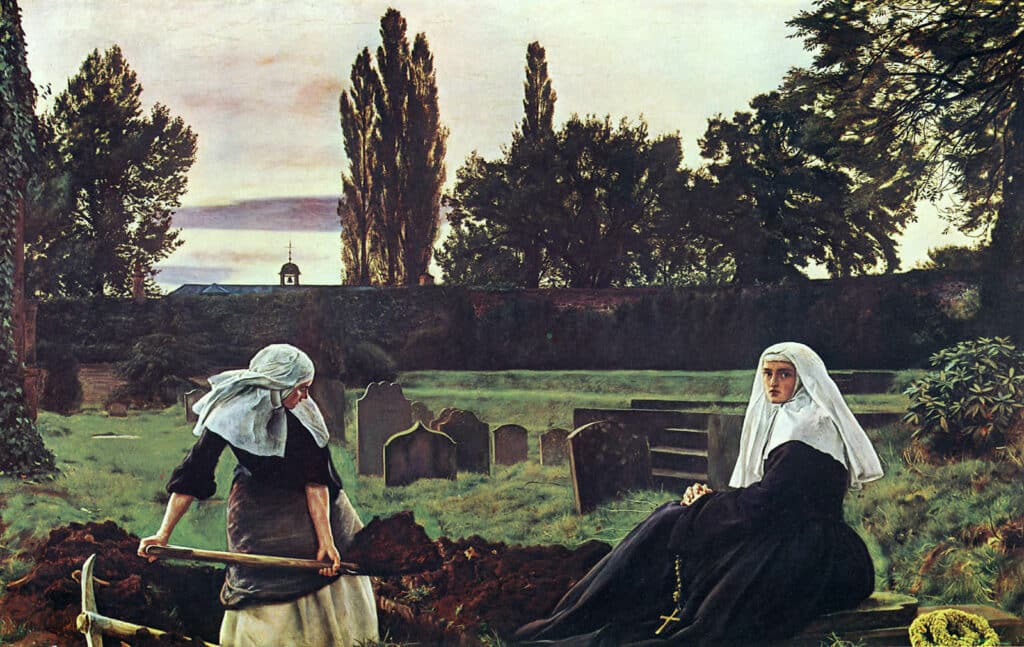
Here we can already see our misconceptions of Medieval women as universally disenfranchised and kept in ignorance; whilst this was certainly true in many places at certain times, women frequently carved themselves out a valued and literate position in High Middle Ages Germany, especially within the context of the Church. Amid her life of contemplative labor and learning, Hildegard began in this period to compose music, learning the psaltery (a many-stringed instrument like a zither) along with musical notation. As well as Jutta, Hildegard was taught by a young monk named Volmar, who would become her lifelong companion. Hildegard only confided of her visions to Jutta and Volmar, and was greatly afraid of making them public. Ahead of her was a long existence of contemplation, labor in the monastery gardens, and tending the parish’s sick, with the reward of heaven at its end. In the end, it was this lifetime of work that inspired her writings as a medieval scientist.
The Turning Point
But there is a reason why we remember Saint Hildegard, whilst Jutta von Sponheim remains only a footnote in history. Upon the death of her dear friend Jutta in 1136, Hildegard was around forty years old, self-confident and quietly afire with the inner flame of fervor. There was no question that she would take over from Jutta. Recognising her prodigious intellect had far outstripped his own, the monk Volmar became her secretary. The turning point for Hildegard’s life – and the reasons why history has remembered her – came in 1141. She records that she received a vision instructing her to ‘write down that which you see and hear’ – which she interpretative as an order to publicize her visions at last. In turmoil, she turned to Volmar, who insisted that she follow the Lord’s order: it was time to make these lifelong holy experiences known. With Volmar as scribe, Hildegard documented her experiences and began to write of them to other church officials. These letters were received rapturously, and at the Synod of Trier in 1148, Pope Eugenius gave Hildegard official sanction that these were indeed visions from the Lord.
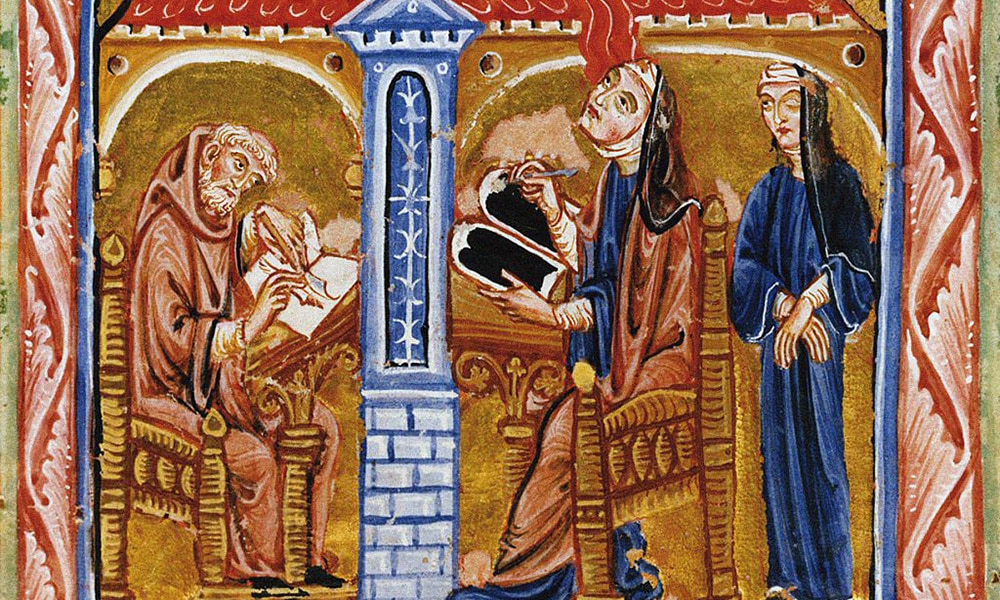
A Correspondent to Emperors
The eloquence and force of her intellect now widely known (especially aided by the stamp of Papal sanction) elevated Hildegard von Bingen significantly. She was soon made a prioress, overseeing a number of monastic communities – but she did not do so passively, she was a clever political operator. She desired to move her monastic community to Rupertsberg, the home of the 8th century Saint Rupert of Bingen. When the Abbott of Disibodenberg refused, she skipped over him and obtained permission directly from the Archbishop of Mainz! She also founded further communities at Eibingen, which remains an enormous and flourishing monastic community today.
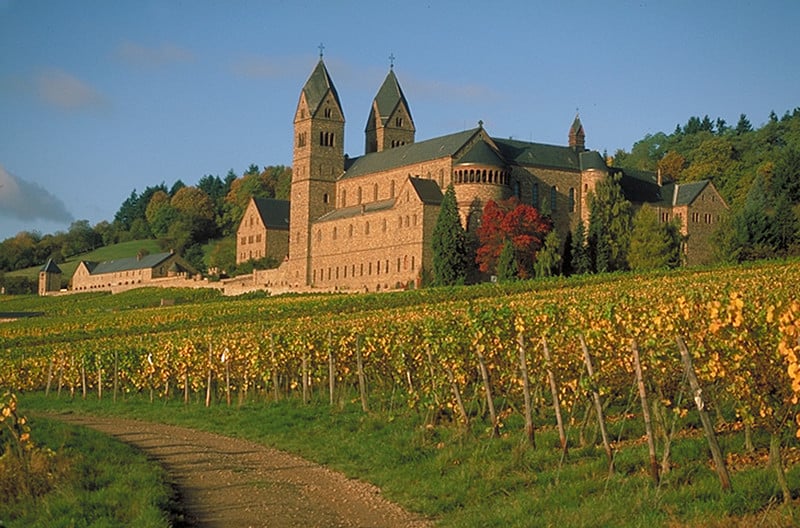
She began correspondences with Churchmen and nobles across Europe, including Popes Eugenius III and Athanasius IV, Holy Roman Emperor Frederick Barbarossa and the Templar patron Bernard of Clairvaux, – her collection of almost 400 letters is the single largest corpus of correspondence from any figure in the Medieval era. Building upon her simple education, she became a voracious autodidact, becoming a self-taught theologian. Her works include three volumes on the nature of God, as interpreted through her own mystical experiences, and a large body of beautiful religious music (if people have heard of Hildegard, it is probably in the context of medieval choral music).
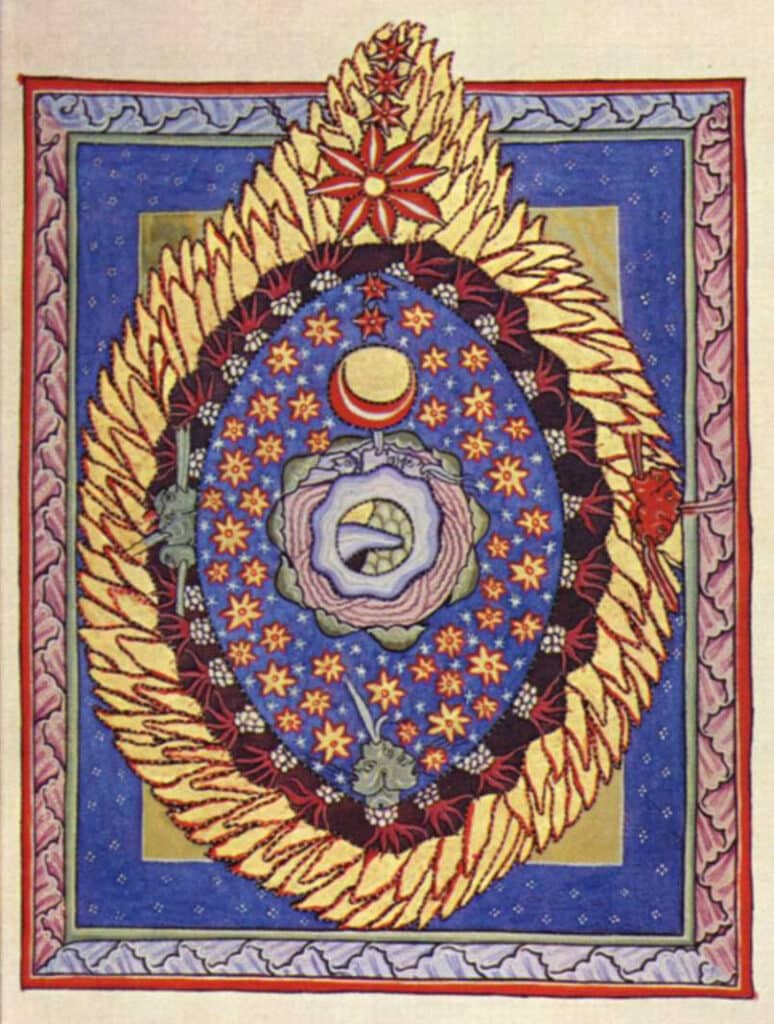
We often think of women as ghettoized from all-male public spaces in this era, but Hildegard undertook several preaching tours of Germany, addressing audiences of monks and of the public – but these were not dry discourses of obscure theology; they frequently lambasted the corruption of the clergy and expounded the need for reform. It is also in this period that she created her own cryptographic language, the Linguae Ignota (‘unknown language’), made from invented characters and inserted into passages of Latin. Historians speculate that this could have been an ‘in-group’ language used between her monastic communities as a sort of fraternal code. It is one of the earliest examples of a constructed language, or ‘conlang’.
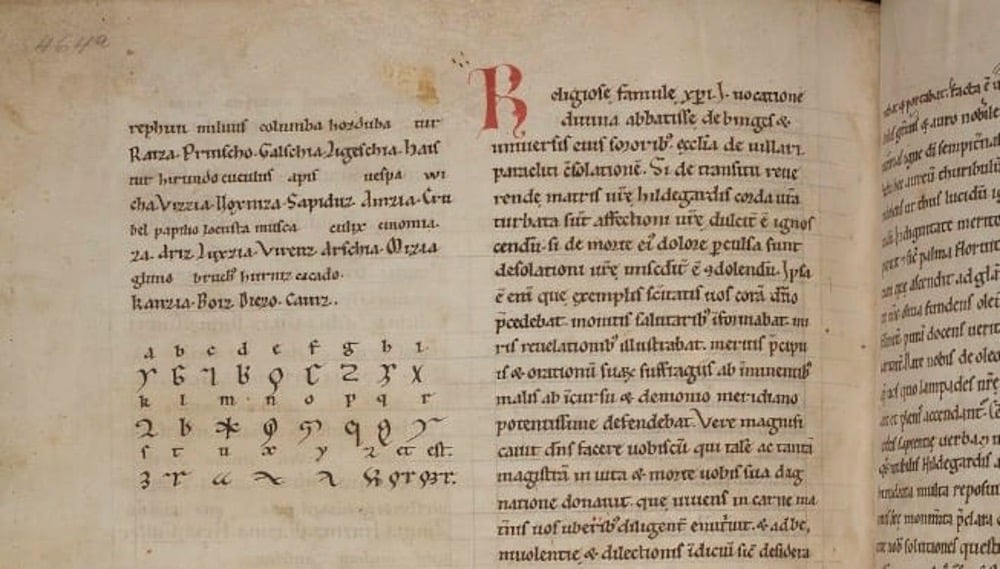
Hildegard the Medieval Scientist
Whilst we could write volumes about Hildegard’s other writing and her influence on the Medieval Christian world, we shall look here at her foundational work in the world of natural sciences. In the Medieval era, inquiry into the natural world had mostly discarded the empiricism of the Greeks: whilst Aristotle’s works were known in the West, they were used as prescriptive texts rather than a method for independent inquiry. Biblical truth was always overlaid upon the natural world, as we saw with how Hildegard’s own visions were interpreted as a child. Hildegard is an early example of the beginnings of a shift away from this top-down approach.
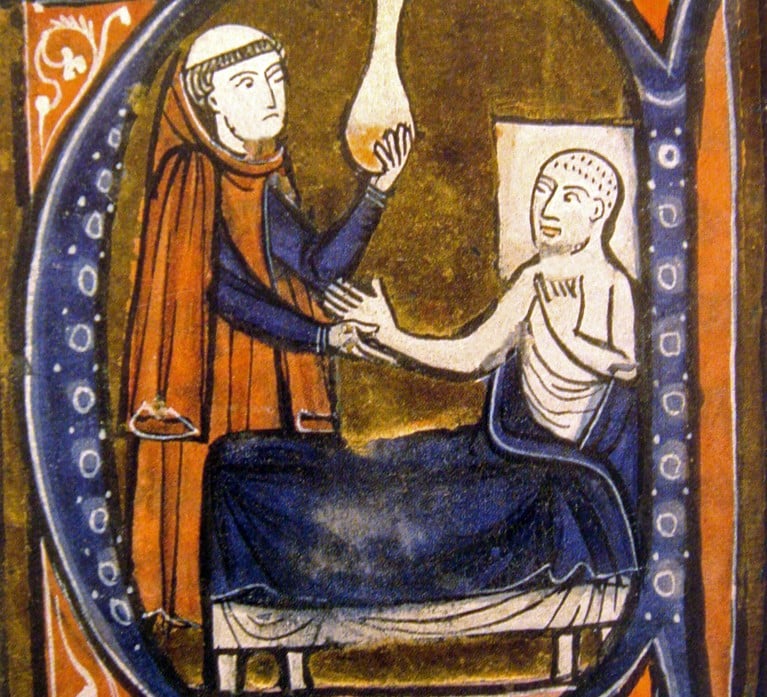
Her time as a neophyte working in the monastery gardens and giving aid to the sick of the parish had inspired her inquiring mind. Combined with the enormous scope of her studies in her later years, she began writing systematically upon medicine, herbs and cures – using observation and experimentation, and incorporating anatomical and medicinal information from Latin texts as an aid to inquiry rather than a substitution for it. She is known to have written two medical treatises: the first, Physica, is a systematic catalogue of plants, animals, fish, reptiles and even geology, with regard to their medicinal properties. But it is the second, Causae et Cura (‘Causes and Cures’), which is the true landmark in natural science. Not only did it document a vast array of existing medical processes, including methods of diagnosis for common ills and medical procedures for agricultural wounds, it also drew up a comprehensive understanding of the causes of disease, building on the Classical conceptions of the Four Humors with experiential knowledge and unique concepts. Whilst this was done within the framework of reconciling the Divine and the bodies of Man, it was always informed by the words of her religious experience in 1141: ‘write down that which you see and hear’. This was not an internal search for meaning, but the glimmers of the scientific method.
Hildegard von Bingen is a landmark figure in so many ways. Her existence at the crossroads of a Medieval world clawing its way out of the Dark Ages places her at a critical juncture of history – and her spectacularly diverse and extensive writings impacted in the development of European intellect: in theology, in music, and particularly as a Medieval scientist. Whilst it is perhaps a stretch to call her a ‘feminist’, since such terms have little retrospective meaning to such alien times and places, there can be no doubt that Hildegard sought to use her position as a divinely-blessed woman to change the world as she saw it. “Woman may be made from man,” she wrote, “but no man can be made without a woman.”

 Historical Swords
Historical Swords Norse & Viking Swords
Norse & Viking Swords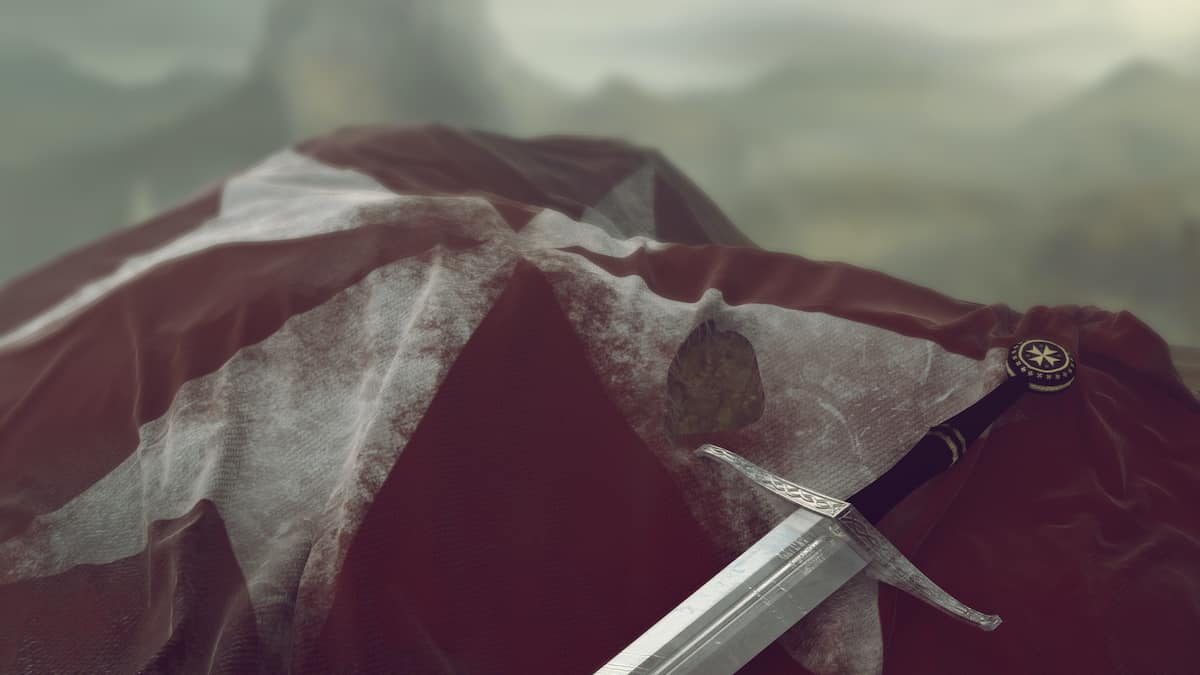 Templar Swords
Templar Swords Claymore Swords
Claymore Swords Fantasy Swords
Fantasy Swords Chainmail
Chainmail Helmets
Helmets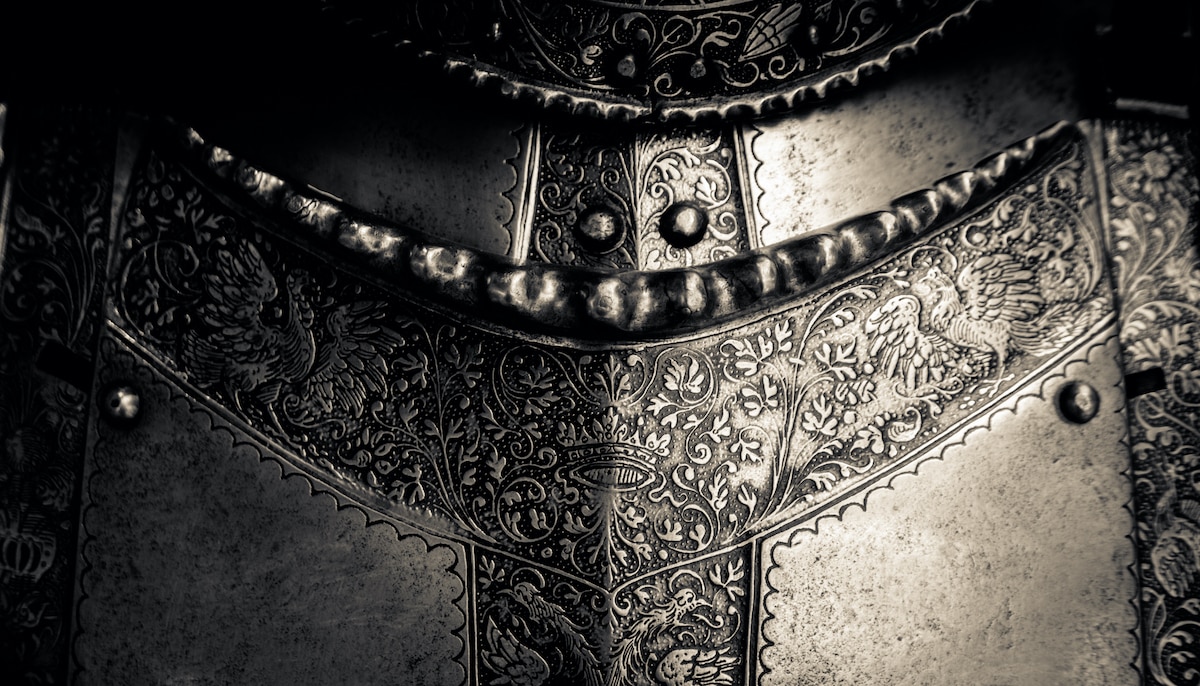 Torso Armor
Torso Armor Bracers and Arm Protection
Bracers and Arm Protection Gauntlets
Gauntlets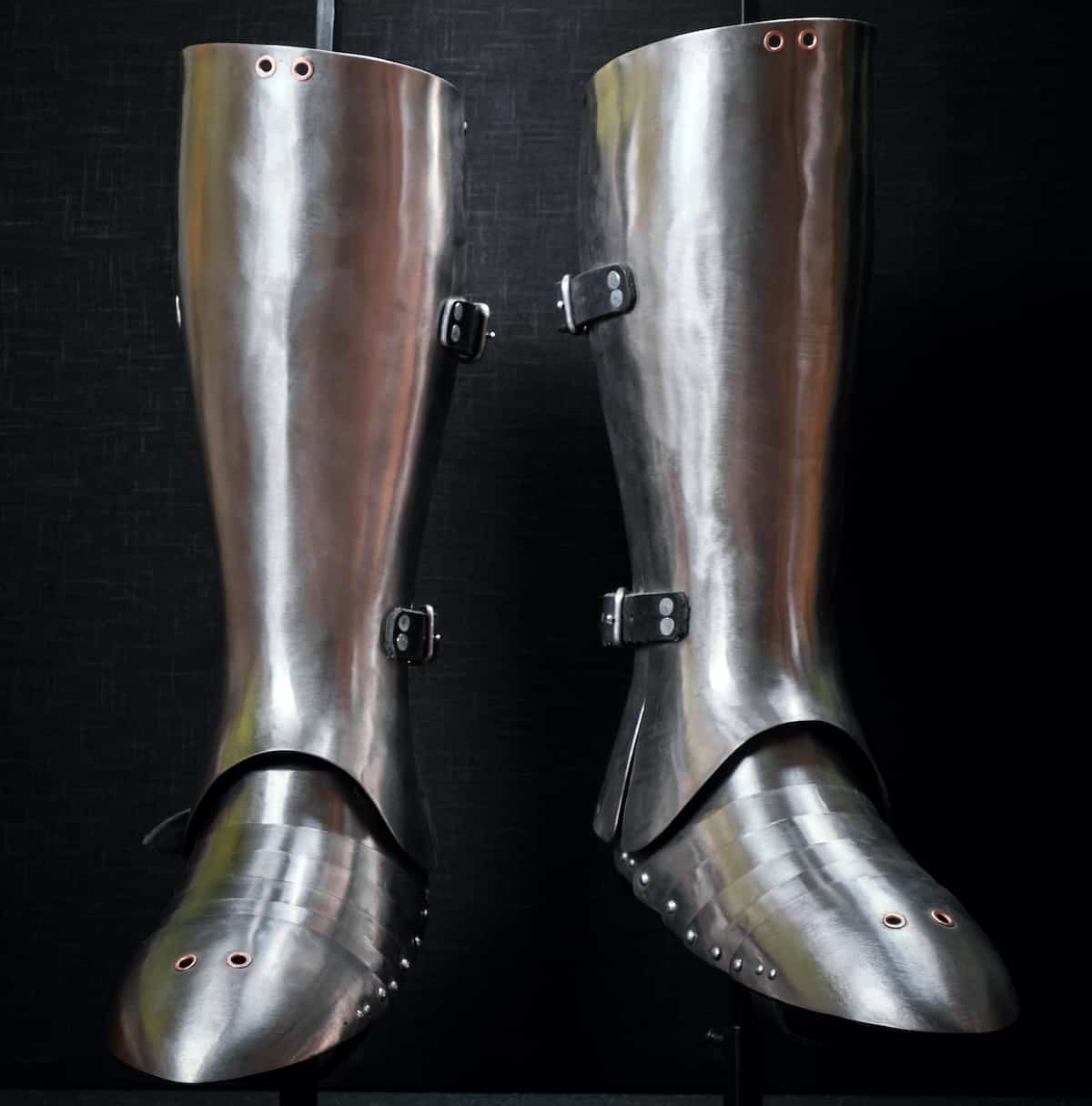 Leg Armor
Leg Armor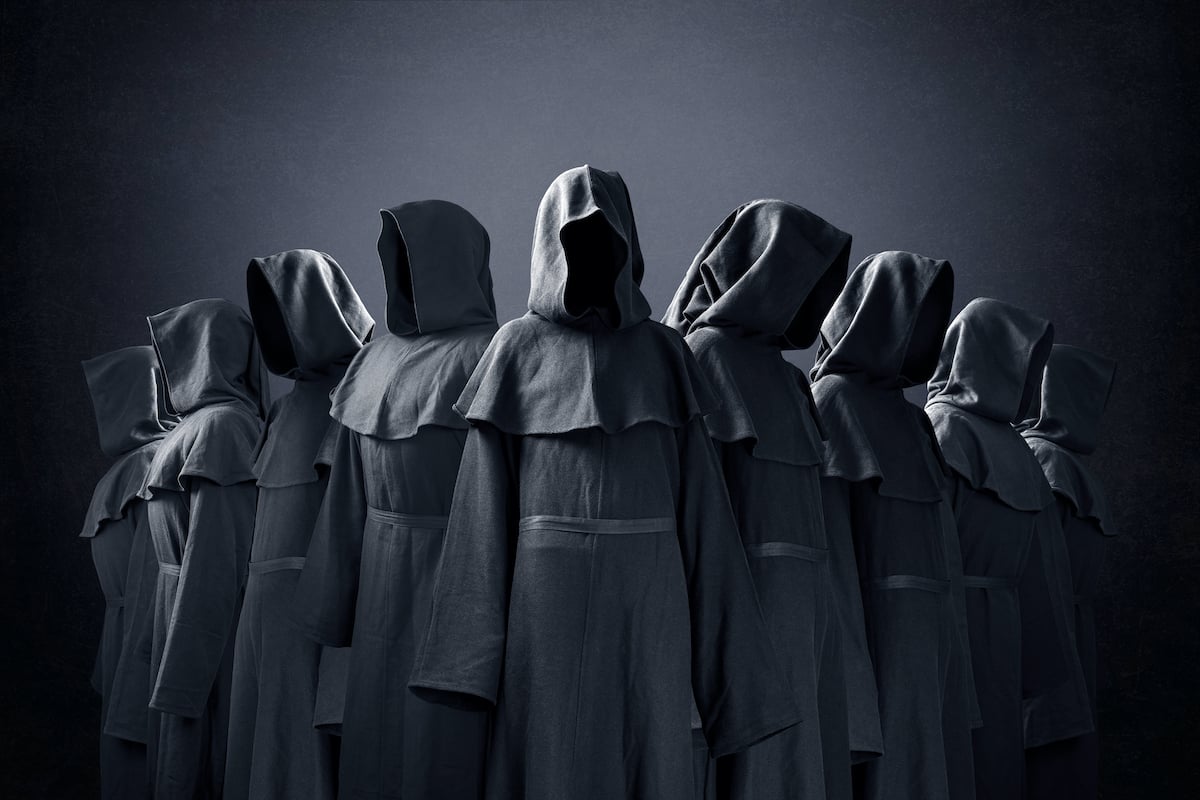 Cloaks
Cloaks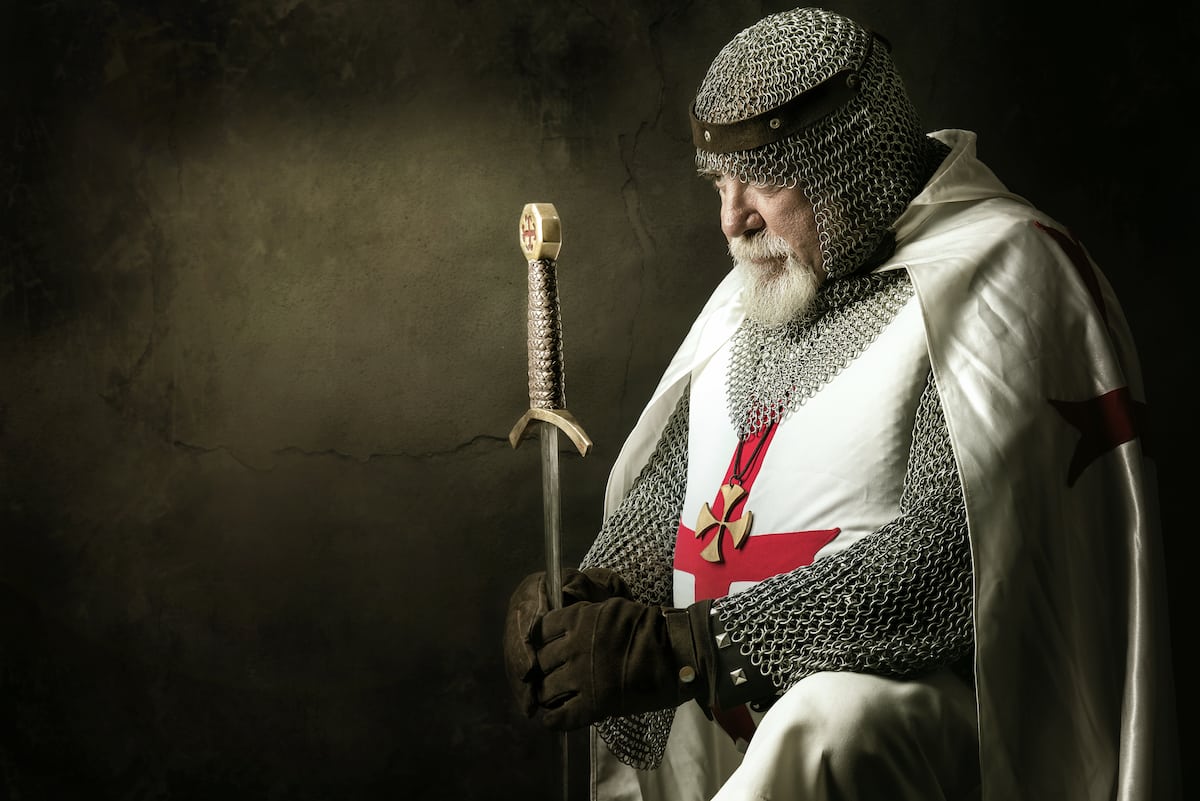 Tabards
Tabards Shirts
Shirts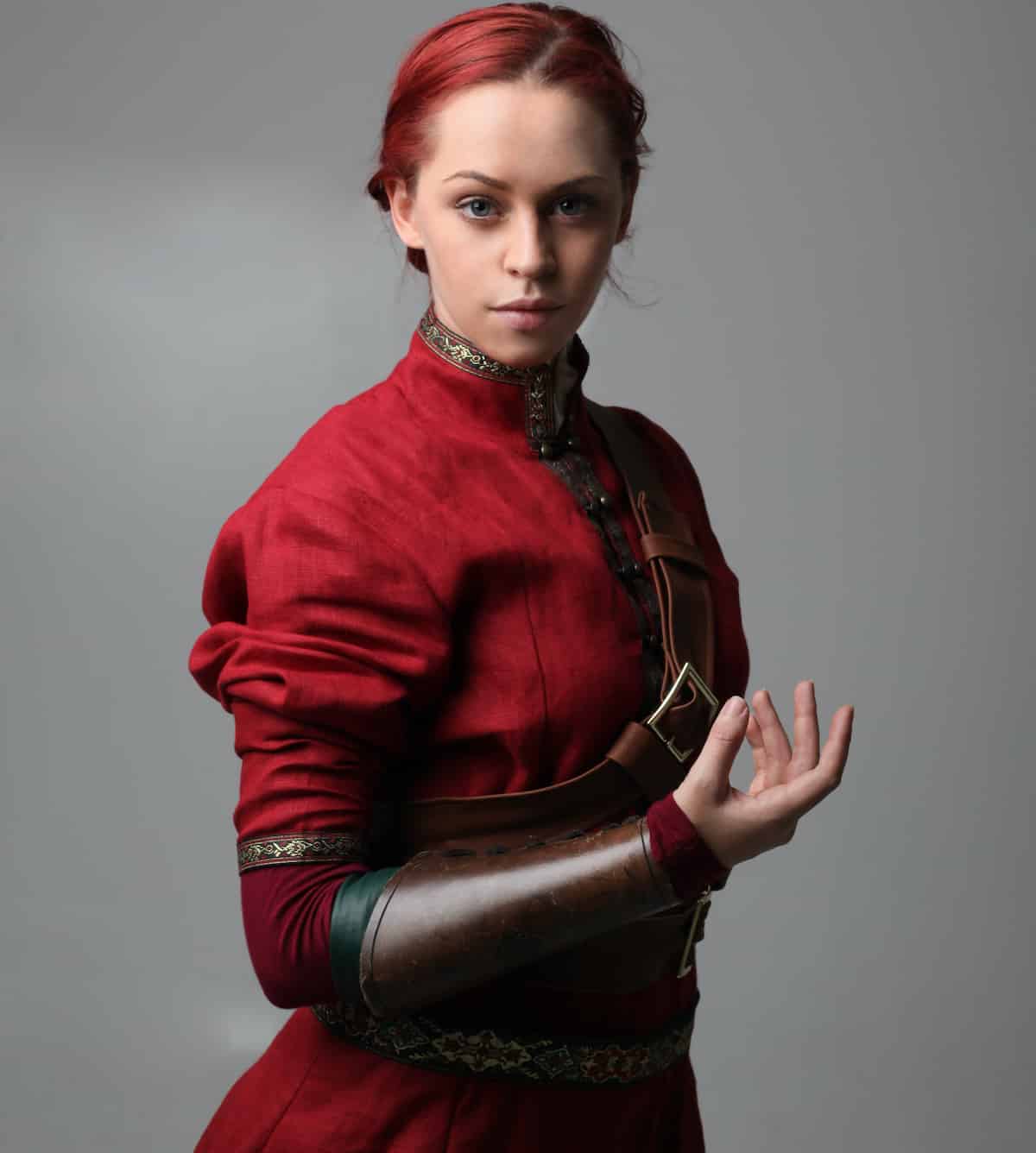 Tunics
Tunics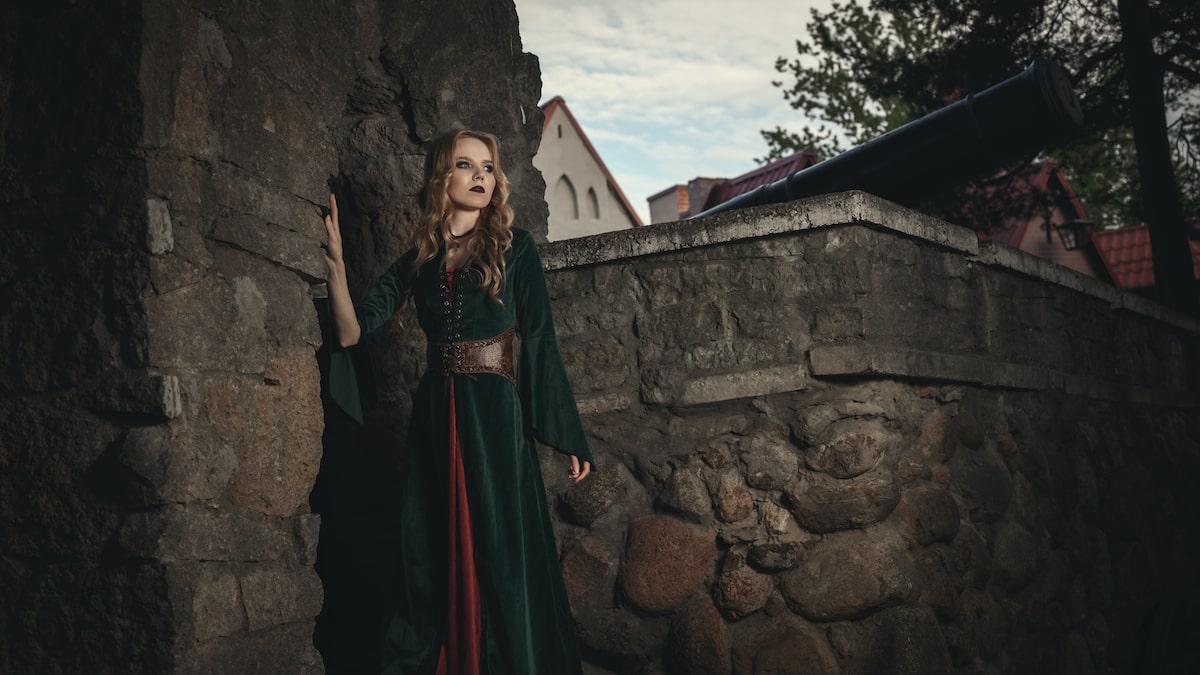 Dresses
Dresses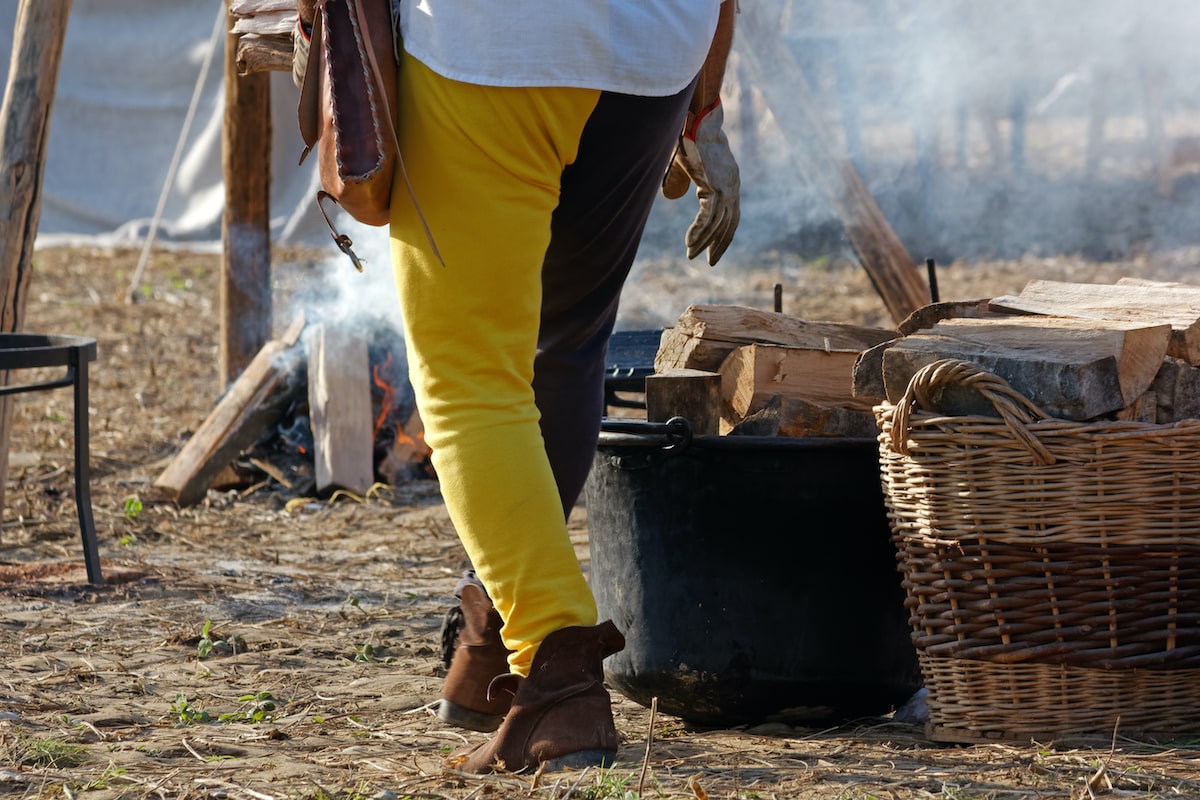 Pants
Pants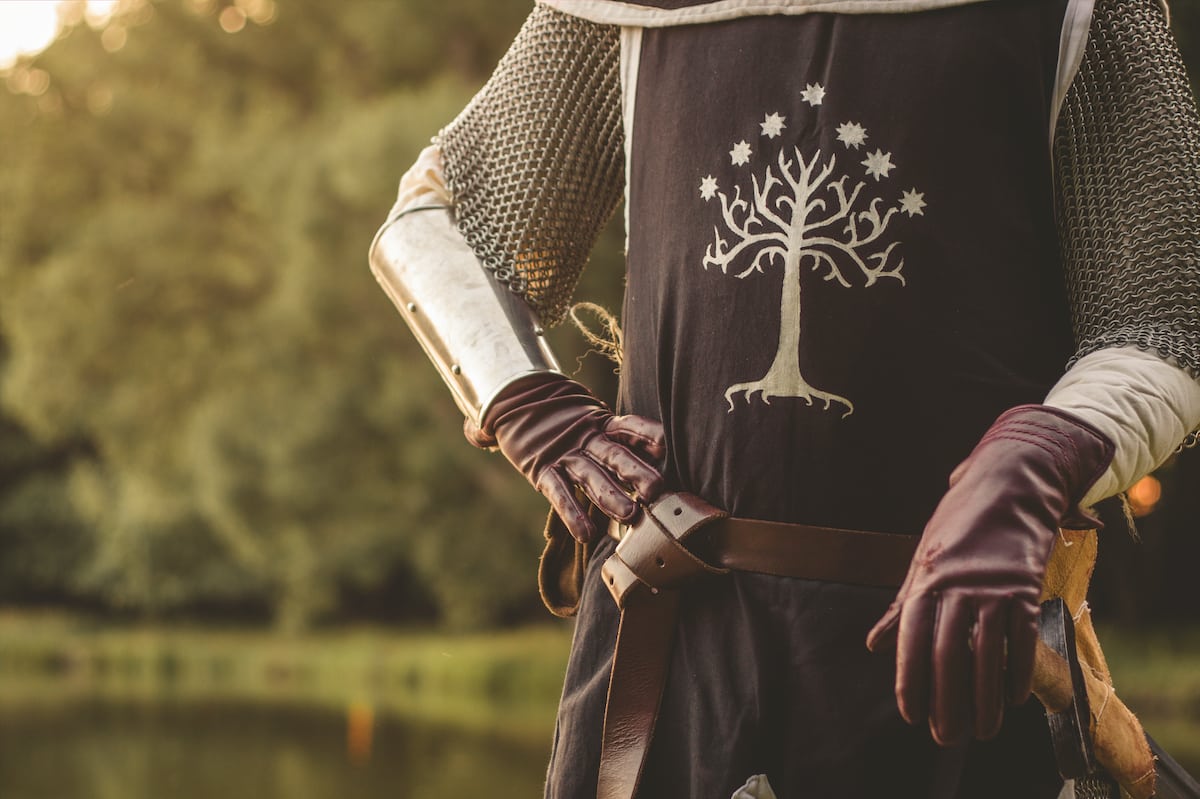 Gloves
Gloves Belts
Belts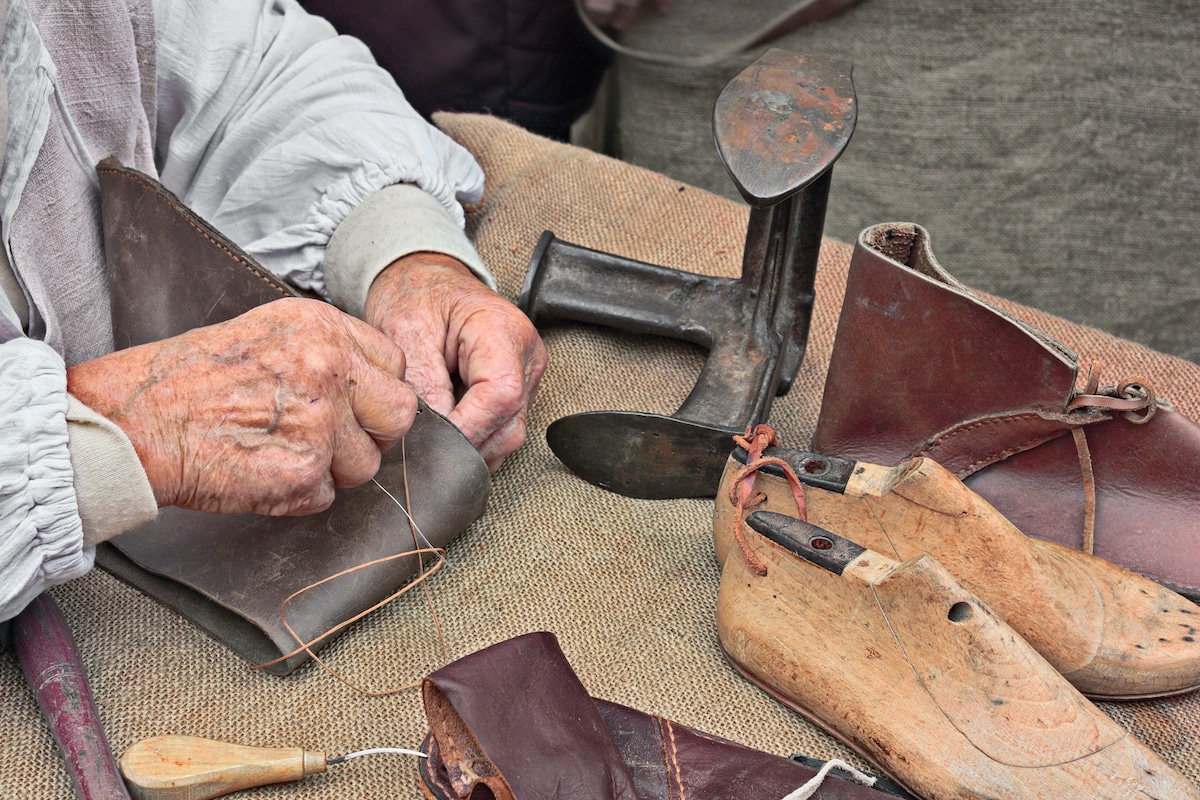 Shoes
Shoes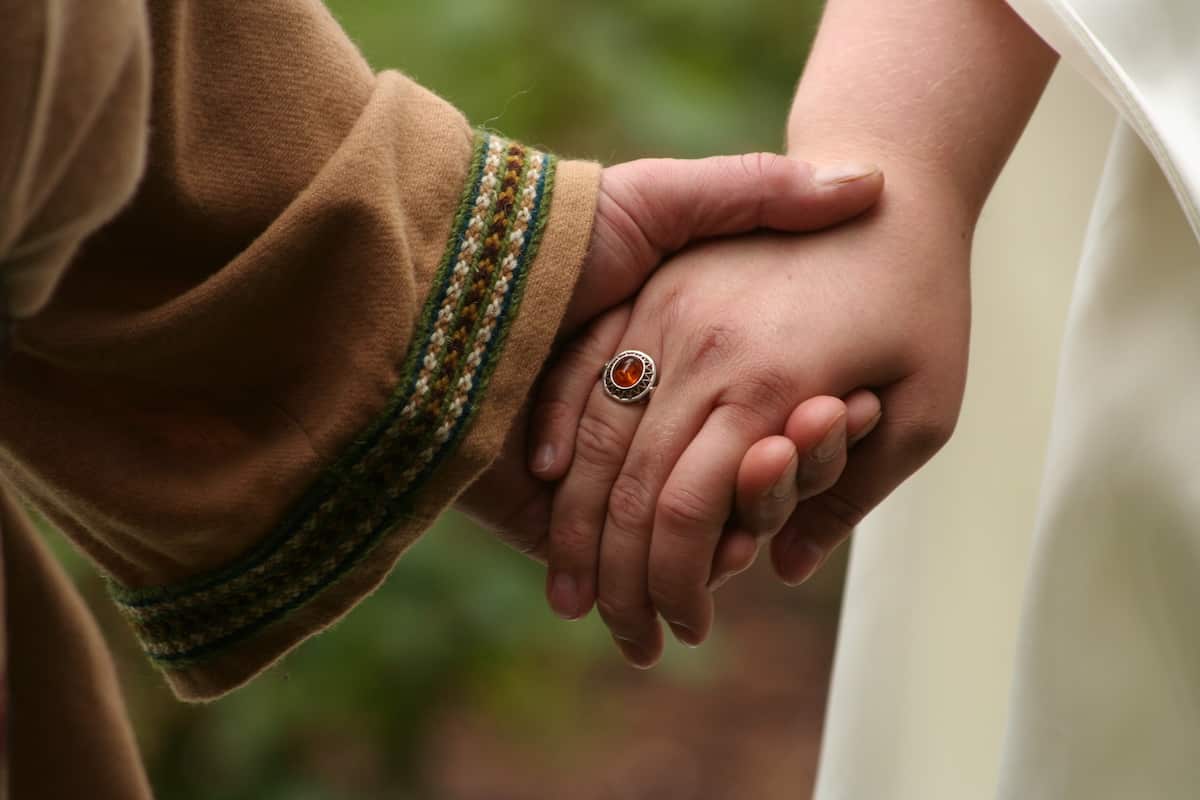 Rings
Rings Necklaces & Pendants
Necklaces & Pendants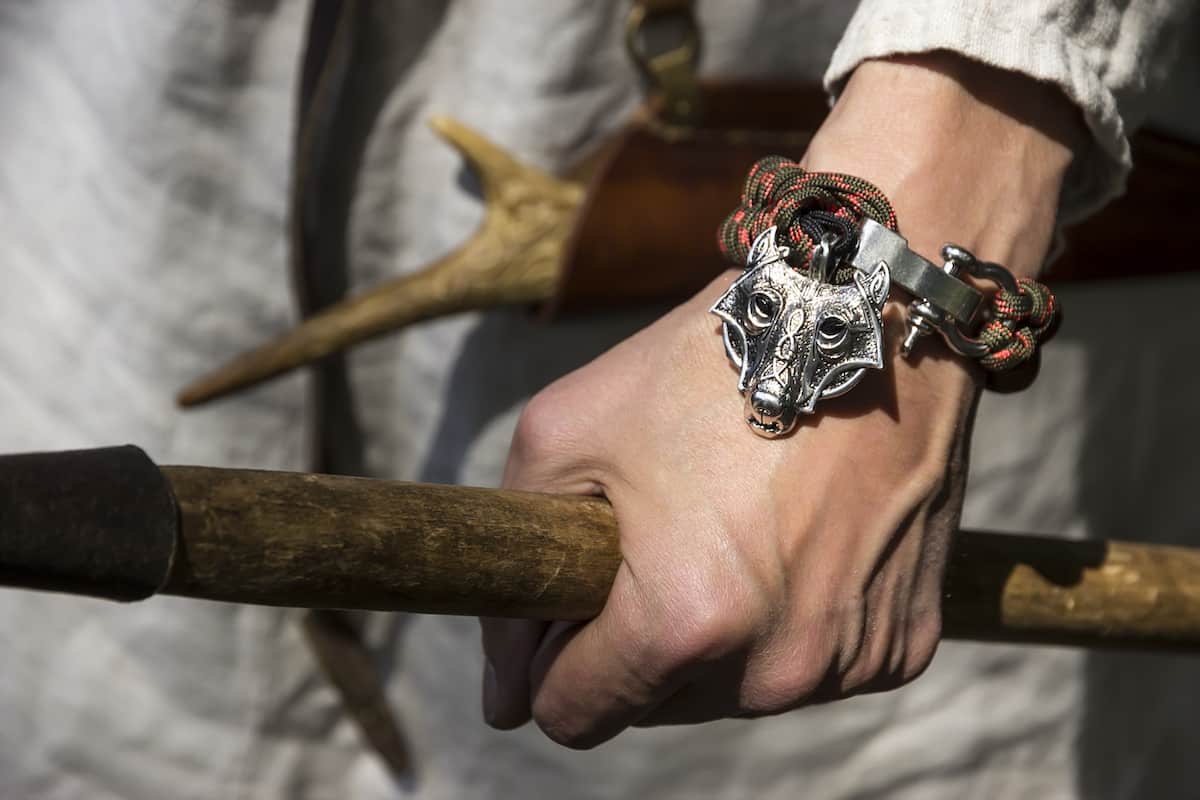 Bracelets
Bracelets


